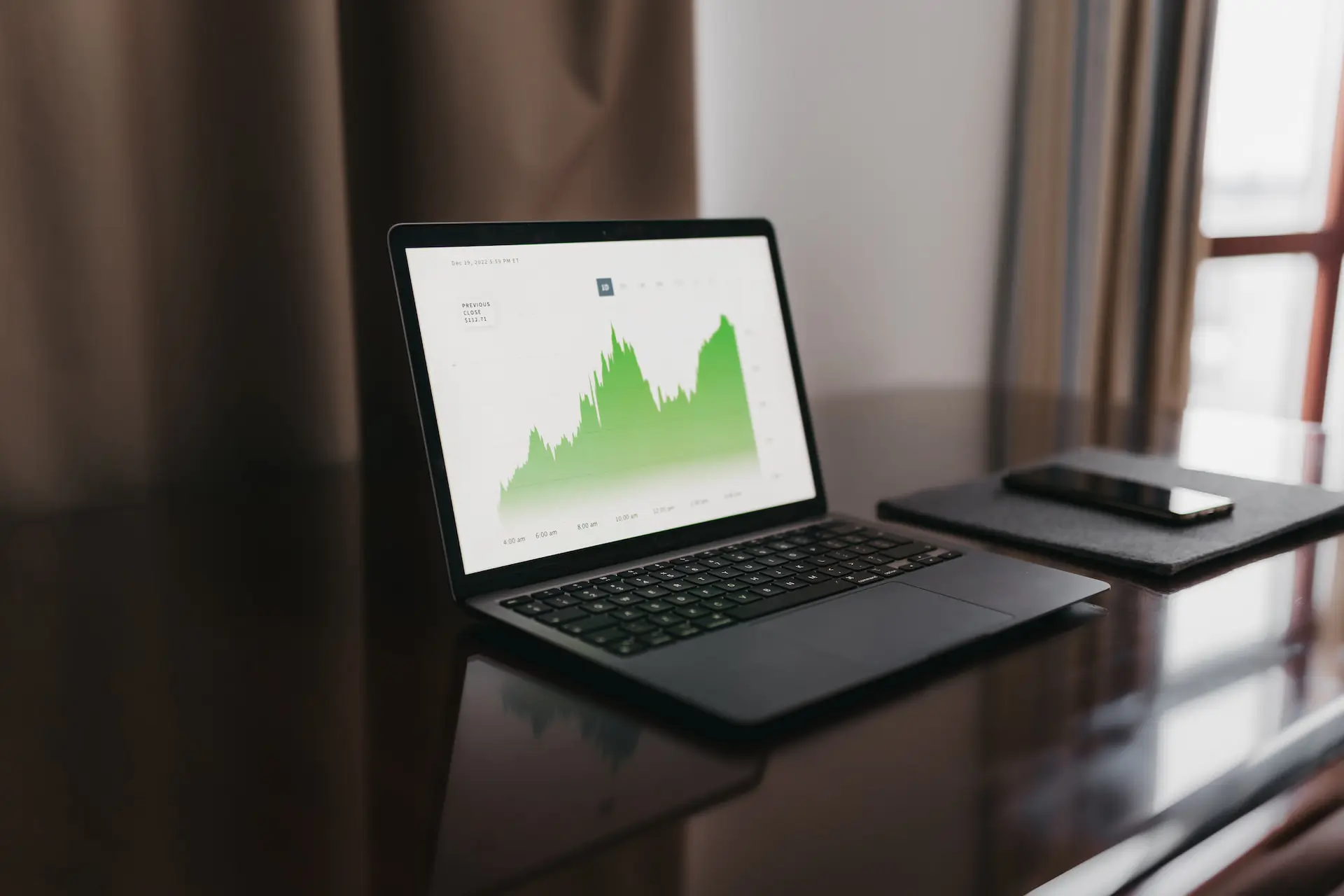If you want to grow your online presence, drive more traffic to your website, and reach more potential customers, you need to learn SEO. SEO stands for search engine optimization, which is the process of improving your website’s visibility and relevance for search engines and users. SEO is not a one-time thing but a continuous and dynamic practice that requires constant learning and adaptation. In this article, we will guide you through the basics of SEO and show you how to start your SEO journey with confidence and enthusiasm.
Definition of SEO
SEO is the acronym for search engine optimization, which is the practice of optimizing your website for search engines and users. The goal of SEO is to make your website easy to find, crawl, index, and rank by search engines, as well as easy to use, understand, and trust by users. By doing so, you can increase the quantity and quality of organic traffic to your website, which means more exposure, engagement, and conversions for your business.
Importance of SEO
SEO is important for many reasons. First of all, SEO can help you reach more potential customers who are looking for your products or services online. According to a study by BrightEdge, 68% of online experiences begin with a search engine, and 53% of all website traffic comes from organic search. This means that if you rank well for relevant keywords, you can attract more qualified leads to your website.
Secondly, SEO can help you build trust and credibility with your audience. By following SEO best practices, such as creating high-quality content, providing a good user experience, and earning backlinks from authoritative websites, you can establish yourself as an expert and a reliable source of information in your industry. This can boost your brand reputation and loyalty among your customers.
Thirdly, SEO can help you gain a competitive edge in your market. With more and more businesses investing in SEO, you cannot afford to ignore it if you want to stay ahead of the curve. By optimizing your website for SEO, you can improve your chances of ranking higher than your competitors for the keywords that matter most to your business. This can give you more visibility, authority, and market share in your niche.
Understanding How Search Engines Work
To learn SEO, you need to understand how search engines work. Search engines are complex systems that use algorithms and artificial intelligence to provide the best possible answers to users’ queries. The main functions of search engines are crawling, indexing, and ranking.
Crawling and indexing
Crawling is the process of discovering new or updated web pages by following links from other web pages. Search engines use automated programs called crawlers or spiders to scan the web and collect information about each web page they find. Crawling is not a one-time event but a continuous activity that happens every day.
Indexing is the process of storing and organizing the information collected by the crawlers in a huge database called the index. The index is like a giant library that contains billions of web pages and their content. Indexing allows search engines to quickly retrieve the most relevant web pages for any given query.
Ranking and visibility
Ranking is the process of ordering the web pages in the index according to their relevance and quality for a specific query. Search engines use complex algorithms that consider hundreds of factors or signals to determine the ranking of each web page. Some of the most important factors are keywords, content quality, user experience, site speed, mobile-friendliness, backlinks, domain authority, and social signals.
Visibility is the measure of how often and how prominently a web page appears in the search results for a specific query. Visibility depends on both ranking and click-through rate (CTR). Ranking higher means that your web page is more likely to be seen by users, but it does not guarantee that they will click on it. CTR is the percentage of users who click on your web page after seeing it in the search results. CTR depends on factors such as title tag, meta description, URL structure, and rich snippets.
Learn Keyword Research Technics
Keyword research is one of the most important aspects of SEO. Keywords are the words or phrases that users type into search engines to find what they are looking for. Keyword research is the process of finding and analyzing the keywords that are relevant to your business goals, audience needs, and competitors’ strategies.
Importance of keywords
Keywords are important because they help you understand what your potential customers are searching for online. By knowing their search intent, you can create content that matches their needs and expectations. Keywords also help you optimize your website for search engines by telling them what your web pages are about and how relevant they are for specific queries.
Tools for keyword research
There are many tools available for keyword research, both free and paid. Some of the most popular ones are:
- Google Keyword Planner: A free tool from Google that helps you find and analyze keywords based on search volume, competition, and cost-per-click (CPC).
- SEMrush: A paid tool that helps you find and analyze keywords based on search volume, difficulty, trends, and SERP features. It also allows you to spy on your competitors’ keywords and strategies.
- Ahrefs: A paid tool that helps you find and analyze keywords based on search volume, difficulty, clicks, and keyword difficulty. It also allows you to research your competitors’ keywords and backlinks.
- Moz: A paid tool that helps you find and analyze keywords based on search volume, difficulty, opportunity, and potential. It also allows you to track your rankings and performance.
How to choose the right keywords
Choosing the right keywords is not a simple task. You need to consider several factors, such as:
- Relevance: The keywords should be relevant to your business goals, audience needs, and content topics. You should avoid keywords that are too broad or too specific, as they may not attract the right traffic or conversions.
- Search volume: The keywords should have enough search volume to indicate that there is a demand for them. You should avoid keywords that have too low or too high search volume, as they may not be worth your time or resources.
- Competition: The keywords should have a reasonable level of competition to indicate that they are achievable and profitable. You should avoid keywords that are too easy or too hard to rank for, as they may not offer enough value or challenge.
- Intent: The keywords should match the intent of the users who are searching for them. You should understand the different types of intent, such as informational, navigational, transactional, and commercial, and choose the keywords accordingly.
Learn On-Page SEO
On-page SEO is the practice of optimizing the individual web pages on your website for search engines and users. On-page SEO involves both technical and content-related elements that affect the quality and relevance of your web pages.
Title tags, URL structure, and meta descriptions
Title tags are the HTML elements that define the title of your web pages. They appear in the browser tab, the search results, and the social media posts. Title tags are important because they tell search engines and users what your web pages are about and how relevant they are for specific queries.
URL structure is the way your web pages are organized and named on your website. URL structure is important because it affects the usability, crawlability, and indexability of your website. A good URL structure should be descriptive, concise, consistent, and hierarchical.
Meta descriptions are the HTML elements that provide a brief summary of your web pages. They appear in the search results below the title tags. Meta descriptions are important because they influence the click-through rate (CTR) of your web pages by enticing users to click on them.
Some best practices for title tags, URL structure, and meta descriptions are:
- Include your target keyword in your title tag, URL structure, and meta description
- Write unique and compelling title tags and meta descriptions for each web page
- Keep your title tags between 50-60 characters and your meta descriptions between 150-160 characters
- Use hyphens (-) to separate words in your URL structure
- Use breadcrumbs to show the hierarchy of your web pages
Learn Content optimization
Content optimization is the process of creating and improving the content on your web pages to make it more relevant, engaging, and useful for your audience. Content optimization involves both writing and formatting techniques that affect the readability and usability of your content.
Some best practices for content optimization are:
- Write original and high-quality content that provides value to your audience
- Use headings (H1-H6) to structure your content and make it easy to scan
- Use short paragraphs, sentences, and words to make your content easy to read
- Use bullet points, lists, tables, images, videos, and other visual elements to make your content more appealing
- Use your target keyword and related keywords throughout your content naturally
- Use synonyms, variations, and modifiers of your target keyword to avoid keyword stuffing
- Use internal links to connect your web pages and provide more information to your audience
- Use external links to cite credible sources and provide more value to your audience
- Use a clear call-to-action (CTA) to guide your audience to take the next step
Learn Internal linking
Internal linking is the practice of linking one web page on your website to another web page on the same website. Internal linking is important because it helps search engines discover and index more of your web pages. It also helps users navigate through your website and find more relevant information.
Some best practices for internal linking are:
- Use descriptive anchor texts that tell users what they can expect from clicking on the link
- Use relevant links that match the context and topic of the source and destination pages
- Use a reasonable number of links per page (not too few or too many)
- Link to important pages more often than less important pages
- Link to deep pages (pages that are not easily accessible from the homepage
Learn Off-Page SEO
Off-page SEO refers to the actions you take outside of your own website to improve its ranking on search engines. One of the most important aspects of off-page SEO is building backlinks.
Backlinks are links from other websites that point to your website. They signal to search engines that your website is trustworthy, relevant, and authoritative. The more high-quality backlinks you have, the higher your website will rank.
However, not all backlinks are created equal. You want to avoid low-quality backlinks from spammy or irrelevant websites, as they can harm your SEO. Instead, you want to focus on building high-quality backlinks from reputable and relevant websites.
How do you do that? Here are some strategies:
- Create valuable and shareable content that other websites will want to link to.
- Guest post on authoritative websites in your niche and include a link back to your website.
- Reach out to influencers and bloggers in your niche and ask them to link to your website or mention it in their content.
- Use social media platforms to promote your content and generate social signals. Social signals are interactions such as likes, shares, comments, and clicks that indicate the popularity of your content on social media. While social signals are not a direct ranking factor, they can help you increase your online visibility and attract more backlinks.
Learn Technical SEO
Technical SEO is the process of optimizing your website for the crawling and indexing of search engines. It involves making sure that your website is fast, mobile-friendly, secure, and easy to navigate.
Site speed is one of the most important factors for technical SEO. A fast-loading website provides a better user experience and can boost your conversion rates. It also signals to search engines that your website is high-quality and reliable. To improve your site speed, you can use tools such as Google PageSpeed Insights or GTmetrix to analyze your website’s performance and identify areas for improvement.
Mobile optimization is another crucial factor for technical SEO. More and more people are using their smartphones to access the internet, so you want to make sure that your website is responsive and adapts to different screen sizes and devices. A mobile-friendly website also helps you rank better on mobile searches, which account for more than half of all web traffic. To check if your website is mobile-friendly, you can use Google’s Mobile-Friendly Test tool or Google Search Console’s Mobile Usability report.
XML sitemaps are files that list all the pages and resources on your website and tell search engines how they are organized and related. They help search engines discover and index your content faster and more accurately. To create an XML sitemap, you can use tools such as the Yoast SEO plugin for WordPress or Screaming Frog SEO Spider. Once you have an XML sitemap, you need to submit it to Google Search Console and Bing Webmaster Tools.
Learn Local SEO
Local SEO is the practice of optimizing your website for local searches. Local searches are queries that include a specific location or intent, such as “pizza near me” or “dentist in Seattle.” Local SEO helps you attract more customers from your local area who are looking for your products or services.
One of the most important elements of local SEO is having a Google My Business profile. Google My Business is a free tool that allows you to create and manage a listing for your business on Google Maps and Google Search. It helps you display important information about your business, such as your name, address, phone number, website, hours, reviews, photos, and more. It also helps you rank higher on local searches and show up in the local pack, which is a section of results that features local businesses related to the user’s query.
Another key element of local SEO is online directories and citations. Online directories are websites that list businesses by category and location, such as Yelp, TripAdvisor, Yellow Pages, etc. Citations are mentions of your business name, address, phone number, and website on other websites, such as social media platforms, blogs, news sites, etc. Online directories and citations help you increase your online presence and authority, as well as generate more backlinks and traffic to your website.
Online reviews are also vital for local SEO. Online reviews are feedback from customers who have used your products or services. They help you build trust and credibility with potential customers, as well as influence their purchase decisions. They also help you improve your ranking on local searches, as search engines consider online reviews as a signal of quality and relevance. To get more online reviews, you can ask your customers to leave feedback on platforms such as Google My Business, Yelp, Facebook, etc., or use tools such as Podium or Trustpilot to automate the process.
Learn SEO Analytics
SEO analytics is the process of measuring and analyzing the performance of your SEO efforts. It helps you understand how well your website is ranking on search engines, how much traffic and conversions you are generating from organic sources, and what areas you need to improve or optimize.
To conduct SEO analytics, you need to use tools that can collect and display data about your website and its visitors. Two of the most popular and powerful tools are Google Analytics and Google Search Console.
Google Analytics is a free tool that allows you to track and analyze various metrics about your website, such as the number of visitors, the sources of traffic, the behavior of users, the conversion rates, the revenue, and more. It helps you understand who your audience is, what they are looking for, and how they interact with your website. It also helps you measure the effectiveness of your SEO strategies and identify opportunities for improvement.
Google Search Console is another free tool that allows you to monitor and optimize your website’s presence on Google Search. It helps you understand how Google crawls, indexes, and ranks your website, as well as how users find and click on your pages. It also helps you detect and fix any issues or errors that might affect your SEO performance, such as broken links, duplicate content, mobile usability, etc.
To use Google Analytics and Google Search Console, you need to create an account and verify your website ownership. Then, you need to link both tools together to get a more comprehensive view of your SEO data. You can also use other tools, such as SEMrush or Moz, to complement your SEO analytics and get more insights and recommendations.
Start your SEO journey
SEO is a complex and dynamic field that requires constant learning and experimentation. However, it is also one of the most rewarding and effective ways to grow your online business and reach more customers. By following this guide, you have learned the basics of SEO and how to apply them to your website. But don’t stop here. Keep learning, testing, and optimizing your SEO strategies to achieve your goals and stay ahead of the competition. Remember, SEO is not a one-time thing but a long-term journey. Start yours today!



